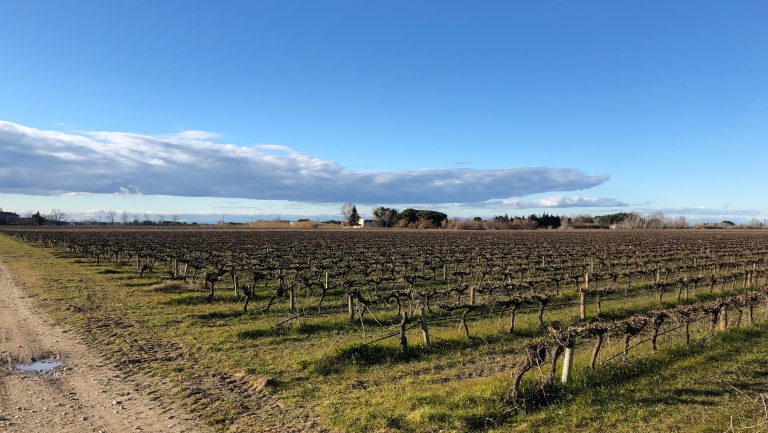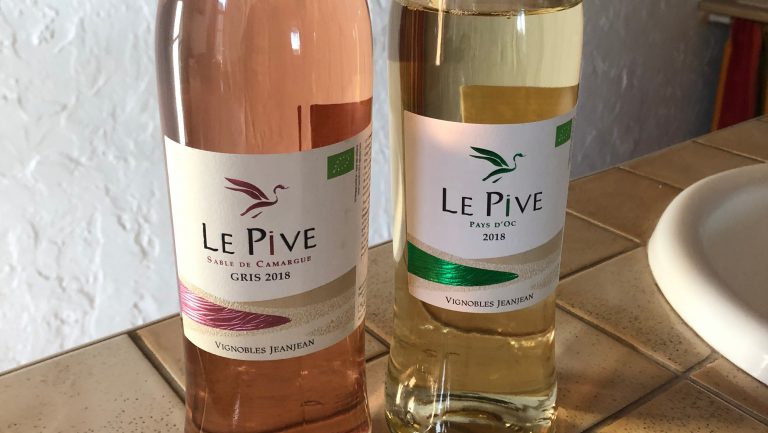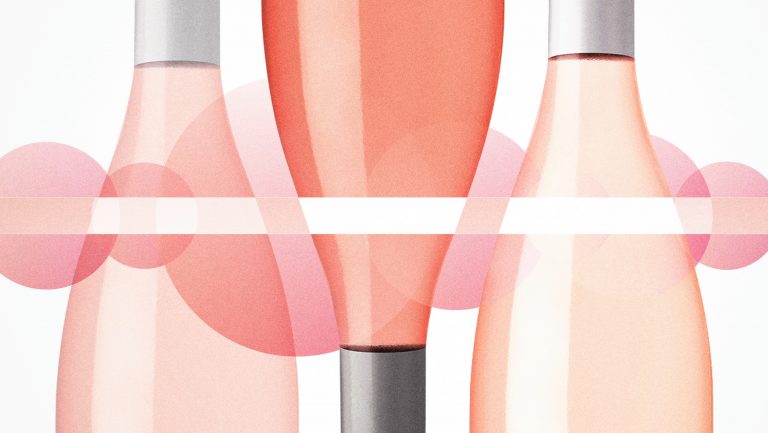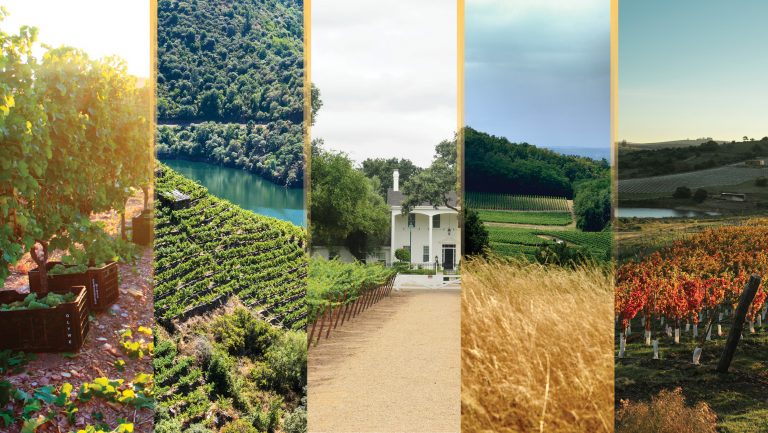Midway between red and white wines, rosé is a style that requires precision—getting the balance right, in terms of color, aromatics, texture, and freshness. An appealing rosé needs aromatics, but to please a broad range of consumers it also needs to stay on the bright and refreshing side of things. To achieve this, winemakers need maturity in the grapes—but not too much, or the alcohol level and lower acid could make the wine heavy. The right level of phenolic maturity is also necessary for the grapes to provide color, but then again, while winemakers don’t want to make a blanc de noirs (a white wine pressed from red grapes), they don’t want to make a light red wine either. No wonder so many winemakers say that rosé is one of the toughest wine styles to master.
Sliding Scales
“When you’re thinking about rosé color, there are two different layers to take into account—shade and color intensity,” says Matthieu Carliez, an enologist and the director of operations at Vignobles Jeanjean, a winery group that produces well over a million bottles of rosé every year, mainly at Domaine Le Pive, in the Camargue region of Languedoc. When deciding whether a wine should be lighter or deeper colored, or what shade of pink it should have, winemakers work on a sort of sliding scale between various factors, chiefly grape variety, maturity levels, and vinification techniques.

Choosing grape varieties is key when determining intensity. “You certainly need varieties that develop nice aromas with relatively little color,” says Carliez. “Merlot gives you nice notes of strawberry and raspberry, with a light color, when it’s picked early. Grenache Noir can get more weight and aromatic intensity a bit later in ripening, with 13% alcohol and half the anthocyanins you would get in a Syrah.” Syrah, he adds, tends to be much more intense in color. “But,” he says, “whereas Grenache and Merlot lean toward orange tones, [Syrah] has a much more violet, bluish shade. So that’s useful, but you can’t use too much or the wine quickly becomes fairly dark.”

Don’t miss the latest drinks industry news and insights. Sign up for our award-winning newsletters and get insider intel, resources, and trends delivered to your inbox every week.
Much of that play with color also has to do with shifting tastes, adds Carliez. “Ten or 15 years ago, most rosés had a light orange, onion-skin kind of tint. Now the trend is more toward bluer tones.” To achieve that, he says, “you also need to manage pH levels, since lower pH levels tend toward bluer tones, while higher ones tend toward orange.” Generally speaking, that may motivate producers to harvest earlier, as a way to keep the acid up and align the wine’s color with current tastes.

Olivier Souvelain, the CEO of Château Gassier in Provence, explains that technology can also be used to help winemakers develop those fashionable tones in their wines. “In 2011,” he says, “we acquired a press that replaces the oxygen with inert gas before pressing the grapes—and that turned the wines from a more orange tinge to a more purplish pink.” Minimizing contact with oxygen is indeed at the heart of many producers’ rosé-making strategies. When anthocyanins in the grapes come in contact with oxygen, the color of the wine browns, shifting to more orange tones. By blanketing the grapes with inert gas, oxidative reactions are avoided and the wine keeps a brighter, bluer tone.
How to stabilize color in wine remains a very complex question, says Gilles Masson, the director of the Rosé Research and Experimentation Center (Centre du Rosé), a specialized research institution in Marseille, France. “Two main factors are known to come into play,” he says. “For one, the higher the acid, the better the color keeps. Oxygen management—especially in stages like bottling—also plays a big part, in particular with paler wines, where the color is more fragile.” To better understand which molecules are at work and why color tends to drop during fermentation and aging, the center is sponsoring a doctoral thesis on pigments in rosé, says Masson. “Every year,” he says, “vignerons see me and comment on how color is keeping or not, and it still almost feels like magic, so we have a lot of work to do yet.”
Fading Colors
As winemakers get better at managing color, the trend toward lighter-colored rosés is paradoxically pushing them toward having ever less of it in their wines. Over the last 15 years, figures from the rosé center show that the color intensity index of rosés worldwide has dropped by around 60 percent. And that’s as true for Cabernet Sauvignon–based rosés in Chile and Bordeaux as for the already pale rosés of Provence, which have always been lighter than average. The trend has emerged in part because darker color is often mistakenly correlated with sweeter wines, and consumer tastes have shifted heavily toward dry and refreshing rosés.
A number of producers and critics think the trend has been moving too far in that direction. Birte Jantzen, a writer with the Guide Bettane et Desseauve, one of the major consumer wine guides in France, says that many négociants seem to focus only on pale color. “I’ve heard from producers,” she says, “that when buyers come in, if they deem a wine sample to have too much color, they won’t even taste and evaluate the actual quality.” Souvelain and Carliez that acceptance of deeper shades of pink is quite limited in the main markets.

This persistent, long-term shift toward ever paler wines does force the hand of winemakers, to a degree, by forcing earlier harvesting and limiting approaches to production. Carliez points out that the technique of macerating grapes before pressing has practically disappeared in Southern France because it would extract too much color from the grapes and potentially lead to browning. At wineries like Le Pive, he employs a technique called stabulation—a sort of cold soak on heavy lees—that keeps the must at a cold temperature for several days before fermentation actually starts. This technique allows him to extract more aromas without deepening the color. According to him, keeping the grapes and the juice cooler reduces enzymatic action, which also plays a part in extracting color.
Masson points out that while adjustments are necessary to go along with the trend, they don’t all have to be heavily technical. “Vignerons can help keep color in check by getting grapes in the winery at a cooler temperature,” he says, adding that they can do this by harvesting at night and pressing the grapes rapidly. “That’s almost a revolution in itself.”
Masson suggests, however, that the trend toward uniformly pale wines might be mitigated in different markets. “We’ve seen in tests that Chinese wine drinkers prefer to have more red fruit and candied flavors in their rosés,” he says. “So maybe the vignerons can head in that direction and bring slightly deeper-colored rosés to the market there.” While conceding that the pendulum to darker color can swing too far, Masson insists that “there’s still a wide range of styles available.”
Nathalie Pouzalgues, a researcher at the Rosé center, also points out that there are variations in taste even within mature markets where the paler shades have the upper hand. In taste tests performed in 2018 with French consumers, the very same wine was presented in a lighter and a darker shade of pink. “People from the northern part of France went for the darker one,” Pouzalgues says, “and in the southern part, for the paler one.” So maybe the trick isn’t only to get rosé’s color right but also to get the right color to the right place.

Dispatch
Sign up for our award-winning newsletter
Don’t miss the latest drinks industry news and insights—delivered to your inbox every week.
Rémy Charest is a journalist, writer, and translator based in Quebec City, Canada. He has been writing about wine and food since 1997 for various Canadian and American print and online publications, including Chacun son vin/WineAlign, Wine Enthusiast, Le Devoir, Le Soleil, EnRoute, Palate Press, Punch Drink, and Châtelaine, and has been a regular radio columnist for CBC/Radio-Canada. He has also judged national and international wine competitions, notably the WineAlign National Wine Awards of Canada, the TEXSOM International Wine Awards, and the International Rosé Championships.







